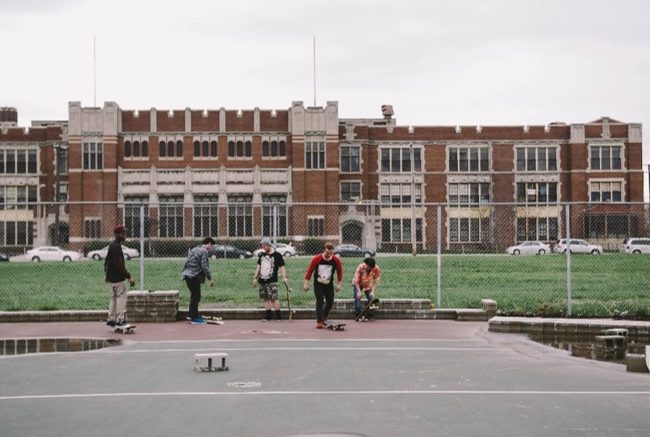-
Survey of Albany and Rensselaer County Residents on Issues Affecting Youth
-
Two-Thirds Say Growing Up Today Harder Than When They Were Kids
-
Life Chances Good for Education; 8 in 10 Say Local Youth Will Have Access to Quality Education & Graduate H.S.
-
4 in 10 Think Youth Will Abuse Drugs or Alcohol; 1 in 3 say Youth Programs do ‘Fair’ or ‘Poor’ Job Preventing Drug/Alcohol Abuse
-
Youth Programs Rated Best on Providing Safe Environment & Encouraging Physical Activity
Loudonville, NY. Two-thirds of adults in Albany and Rensselaer counties agree it is harder ‘today for teens to successfully move into adulthood than when they were teens,’ according to a new Siena College Research Institute poll conducted as part of a Community-Based Research course (COMD 210) at Siena College. Survey respondents were asked about the life chances of youth, their level of need and the most important aspects of after school programs within their communities. Qualitative interviews with community leaders discussing similar topics were also conducted. The study was conducted in partnership with the Boys & Girls Clubs of Albany (BGCA) and the Troy Boys & Girls Club (TBGC). Students in the course will present the survey’s full findings to community stakeholders, Boys & Girls Club administrators and Siena College faculty on Tuesday, April 24th at 6:30 p.m. at a forum open to the public at the Troy Boys & Girls Club.
Growing up today
When asked if ‘it is easier today for teens to successfully move into adulthood, harder or is it about the same as when you were a teen’, 66 percent said it is harder today. When asked specifically about several needs of local youth, Albany and Rensselaer county residents identified having good role models as the most significant need (92 percent said it is very significant or somewhat significant). All other needs asked about were viewed as very or somewhat significant by more than 8 out of 10 respondents, including: preparing teens for college (90 percent), having resources outside of school to get help with academics (90 percent), having access to programs that promote physical activity (89 percent), preparing teens for the workforce (88 percent), having access to healthy food options (86 percent) and having a safe place for teens to go afterschool (82 percent).
“The needs of our community are constantly evolving with new challenges being faced each day. As an organization focused on creating positive outcomes for youth, it is our responsibility to remain aware of these challenges and adapt,” said Justin Reuter, Executive Director of the Boys & Girls Clubs of Albany.
Life Chances
To measure young people’s ‘life chances,’ that is, the perceived likelihood that young people in a community will experience certain positive or negative life events, respondents were asked: ‘How likely do you think it is that a typical young person in your neighborhood or area where you live will experience each of the following?’
Life chances for education were rated highest. A large majority (over 80 percent) said it is almost certain or very likely that young people in their community will graduate from high school. A majority also said it is not very likely or not at all likely that the typical young person will drop out of high school (69 percent). Seventy-eight percent said young people have access to a quality public education, while 68 percent say the typical young person in their neighborhood will attend college. Sixty-seven percent said that the quality of education provided by public school improves the life chances of young people, with only 14 percent saying it worsens life chances.
Other life chances where more than half of respondents said almost certain or very likely: get a job with opportunities for advancement (58 percent), get a full-time job with benefits (52 percent) and have access to good quality healthcare (52 percent).
Across the sample, life chances pertaining to drug and alcohol abuse were rated lowest. About four in ten (39 percent) said it was almost certain or very likely that the typical young person would abuse drugs or alcohol, compared to only 20 percent who said not very likely or not at all likely. A further 40 percent said it was a toss up. When asked specifically about how good of a job community youth programs are doing at ‘preventing drug and alcohol abuse,’ a slight majority (56 percent) said excellent or good, while just over one-third (37 percent) said fair or poor.
“Across the entire life chances sequence in the survey, abuse drugs and alcohol stood out to our class as one of the most significant issues facing young people in our communities. To see that four in ten people think the average young person in the area will abuse drugs or alcohol, and another four in ten say it is ‘a toss up,’ shows that community members are acutely aware that drug and alcohol use is a problem, and we as a community have a significant amount of work to do to fix this issue,” said April Backus, one of two professors of Siena’s Community-Based Research course.
When asked about life chances and the criminal justice system, responses differed by race. Thirty-one percent of non-white respondents said it was likely a young person will be arrested for a felony, compared to nine percent of white respondents. Similarly, almost four in ten non-white respondents said it was likely for the average young person to have an incarcerated family member, compared to two in ten white respondents.
Responses by people of different income levels across the life chances questions varied. In general, those household incomes under $50k found it less likely that young people will experience most of the positive life chances events, such as owning their own home, and more likely that they will experience negative life chances events, such as getting arrested for a felony, compared to household incomes of $50k or over. When it comes to education, 77 percent of those making above $100k said the typical young person in their neighborhood will attend college while only about half (53 percent) of those making below $25k said the same. And, 44 percent of household incomes under $25k said it is almost certain or very likely that young people in their neighborhood will drop out of high school, compared to only four percent of household incomes $100k or more.
“While the perceived life chances of young people in Albany and Rensselaer counties are strong, especially when it comes to education in the area, there are still notable differences between people of different races and different income levels, with nearly half of those making less than $25k saying it is likely that a young person in their neighborhood will drop out of high school, while virtually no one making over $100k – only four percent – saying the same” said Pete Cichetti, the other professor of the Community-Based Research course at Siena.
After School Programs
Eighty percent of Albany and Rensselaer county residents say community youth programs are doing an excellent or good job at providing a safe environment for youth when they are not in school. Similarly, 77 percent and 75 percent say that such programs are doing an excellent or good job at providing programs that encourage physical activity and programs that young people enjoy, respectively. A majority stated that community youth programs were doing an excellent or good job at every aspect they were asked about, including: improving students’ academic performance (57 percent), preventing alcohol or drug abuse (56 percent), and meeting the needs of local parents (63 percent).
“While the Club’s primary role is to provide a safe and positive environment where youth feel safe during after-school hours, our targeted programs allow us the flexibility to adapt and remain relevant despite a constantly changing landscape,” said Reuter.
One-third of respondents identified help with homework as the single most important component of an after school program. Almost all (98 percent) identified it as an important part of after school programming. Recreational opportunities (96 percent) and education on living a healthy lifestyle (96 percent) were also perceived as important to include in community youth programs.
Patrick Doyle, CEO of the Troy Boys & Girls Club stated, “While most youth attend a club to participate in educational programs, sports or just to hang out with their friends, we also know that some youth attend for a nutritious meal.”
The findings of this study will be presented by students in the COMD 210 class on Tuesday, April 24th at a community forum open to the public at the Troy Boys & Girls Club. In anticipation of the event, Assembly member John T. McDonald III said, “Understanding the issues that our youth are facing is vital to assisting them in navigating and dealing with problems in a productive manner. Community forums such as this one are a wonderful opportunity for us to listen to our kids and the results will allow us to be responsive to their needs. Thank you to the partners who have come together to organize this important event that is sure to have a positive impact throughout the community.”
Dr. Don Levy, Director of the Siena College Research Institute said, “SCRI is pleased to work with this team of student researchers and the Boys & Girls Clubs to measure and broadcast our community’s perception of challenges our youth face. Working together we can enhance the life chances of every Capital Region youth.”
###
This Siena College Poll was conducted in February 2018 by telephone calls to 601 New York State residents. Respondent sampling was initiated by asking if they were over 18 years of age and presently live in either Albany or Rensselaer County. It had an overall margin of error of +/- 5.6 percentage points including the design effects from weighting. Data was statistically adjusted by county, age, race, and gender to ensure representativeness of known population demographics. The Siena College Research Institute, directed by Donald Levy, Ph.D., conducts political, economic, social and cultural research primarily in New York State. SCRI, an independent, non-partisan research institute, subscribes to the American Association of Public Opinion Research Code of Professional Ethics and Practices. For more information, call April Backus at (518) 782-6997 or abackus@siena.edu. For survey crosstabs and frequencies: www.siena.edu/scri/research.





